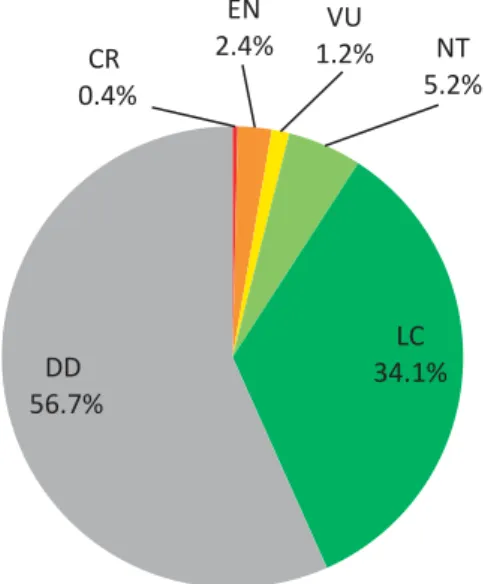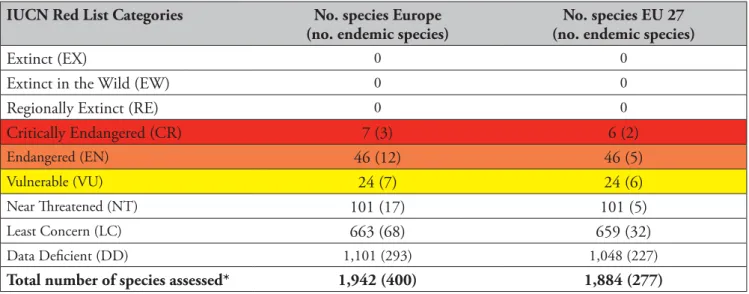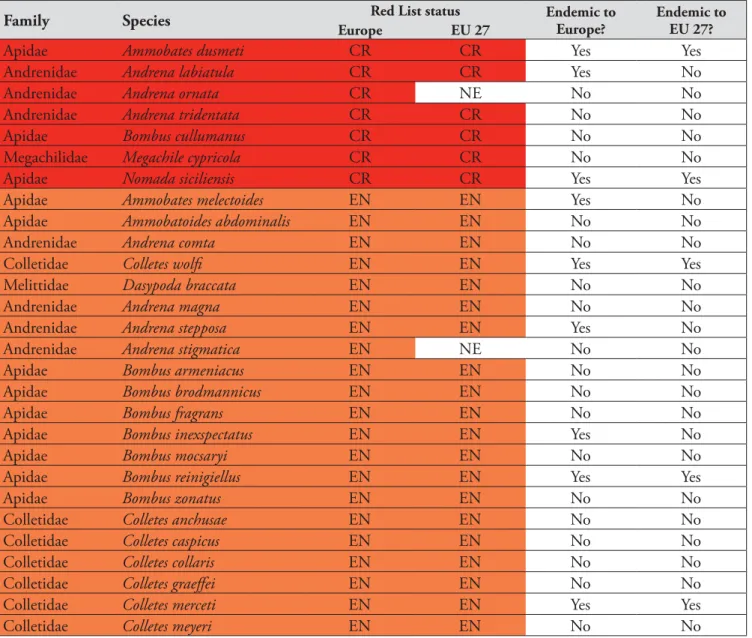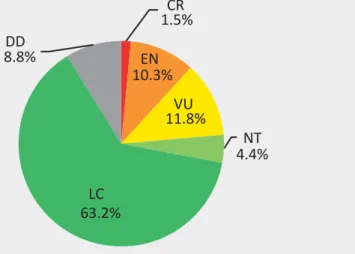Cecilia Costa, Consiglio per la Ricerca e la sperimentazione in Agricoltura (Italy): assessor of Apis mellifera. Michael Kuhlmann, The Natural History Museum (UK): assessor of all Colletes species; also provided the taxonomic framework and country-level presence data for all European bee species. Francisco Javier Ortiz-Sánchez, University of Almería (Spain): assessor of Afranthidium, Aglaoapis, Anthidiellum, Anthidium, Coelioxys, Dioxys, Ensliniana, Eoanthidium, Lithurgus, Metadioxys,.
Alain Pauly, Belgian Museum of Natural History (Belgium): evaluator of all species of Lasioglossum, Nomiapis Halictus, Ceylalictus, Nomioides and Thrincohalictus; and reviewer of species of Dufourea, Rhophitoides, Rophites and Systropha. Robert Paxton, Martin-Luther-Universität Halle-Wittenberg (Germany), German Center for Integrative Biodiversity Research (Germany) and Queen's University Belfast (UK): Apis mellifera assessor. Radchenko, Institute of Evolutionary Ecology of the National Academy of Sciences (Ukraine): Assessor of Andrena species and all Bombus species;.
Background
- The European context
- European bees: diversity and endemism
- Bee ecology
- Importance of bees in pollination
- Assessment of species extinction risk
- Objectives of the assessment
A recent checklist compiled by Kuhlmann et al. 2014) showed that the bee fauna of the Western Palearctic comprises about 3370 species. Depending on bee species and plant sources, raising a single larva requires from seven to 1100 flowers or from 0.9 to 4.5 inflorescences (Müller et al. 2006). For these taxa, soil texture, sun exposure, and degree of slope may be important factors in determining nest sites (Potts et al. 2005).
Other species such as Colletes cunicularius (Colletidae) and Andrena vaga (Andrenidae) are strictly dependent on sandy soils (psamophilic species) (Vereecken et al. 2006). Bees provide an ecosystem service in the form of crop pollination, which is estimated at €153 billion annually worldwide (Gallai et al. 2008) and €22 billion annually in Europe (Gallai et al. 2008). Bee species diversity is also important, with recent studies showing that wild bees are responsible for a greater proportion of pollination services previously attributed to domesticated bees (Apis mellifera) (Garibaldi et al. 2013).

Assessment methodology
- Geographic scope
- Taxonomic scope
- Assessment protocol
- Species mapping
The spatial analyzes presented in this publication (see section 3.3) were analyzed using a geodetic discrete global grid system defined on an icosahedron and projected onto the sphere using the inverse Icosahedral Snyder Equal Area (ISEA) Projection (S39) . This corresponds to a hexagonal grid composed of individual units (cells) that retain their shape and area (864 km²) around the world. Patterns of species richness (1,965 species) (Figure 7) were mapped by counting the number of species in each cell (or cell section, for species with a coastal distribution).
Endemic species richness patterns (400 species) were mapped by counting the number of species in each cell (or cell section for coastal species) that were identified as endemic to geographic Europe as defined in this project (Fig. 8). Patterns of threatened species richness (categories CR, EN, VU at European regional level - 77 species) (Figure 9) were mapped by counting the number of threatened species in each cell or cell section. Finally, an analysis of the distribution patterns of species with missing data (1101 species) was performed by counting the number of species with missing data in each cell (Figure 10).
Results
- Threat status
- Status by taxonomic group
- Spatial distribution of species
- Major threats to bees in Europe
- Population trends
- Gaps in knowledge
Of the five most important pollinators of European crops, three are bumble bee species (Kleijn et al. unpublished data). Thus, climate change, through rising temperatures and long periods of drought, is responsible for major changes in bumble bee habitats (Rasmont et al. 2015). The geographic range of the critically endangered Bombus cullumanus has shrunk enormously in the last ten years following habitat fragmentation and changes in agricultural practices involving the removal of clover – its main forage (Rasmont et al. 2005).
It seems clear that honey bee traits make them more robust than other wild bee species to resist the effects of pesticides (Desneux et al. 2007). Maintenance of the existing shoreline will generally cause a significant loss of salt marsh (Cooper et al. 2001), with direct impacts on specialist bee species such as Colletes halophilus (a European endemic with a restricted range). An illustration of the shortcoming is that there is no European equivalent to the Michener et al.

Conservation measures
- Biodiversity protection in Europe and the EU
- Conservation of bee species in the EU
- Conservation of bee species at the national level
- Extinction risk versus conservation status
- Red List versus priority for conservation action
Furthermore, negative consequences are possible for specialized or incompatible species and have the potential to distort plant-pollinator interactions in agro-ecosystems (Diekotter et al. 2010). One option available in AES is the establishment of wildflower planting strips on agricultural land, which in some cases can promote bee abundance and species diversity (Carvell et al. 2006, Scheper et al. 2013); however they are poor for the conservation of rare species (Korpela et al. .. 2013) which is not surprising as they were not designed for this purpose. Studies synthesizing global evidence on local and landscape factors affecting bees have concluded that benefits can be derived from: maintaining areas of semi-natural habitat in agroecosystems (e.g., Ricketts et al. 2008);
In general, bee species diversity, especially common generalist species, can be promoted in different types of landscapes by providing different quality local habitats (Kleijn et al. 2011). There are also other regional red lists, such as the Red Book of Invertebrates of Andalusia (Spain) (Barea et al. 2008), the Red List of Carpathian Threatened Species (Witkowski et al. 2003) or the Red List of the Tula Region (Bolshakov). et al. 2013). The IUCN Red List criteria rank species solely on the basis of their relative risk of extinction (IUCN 2012a).
No species meeting the IUCN Red List criteria for one of the threatened categories at the regional level can be considered to have a favorable conservation status in the EU. Article 1(i) defines the conservation status of a species as "the sum of the influences acting on the species in question which may affect the long-term distribution and occurrence of its populations in the European territory of the Member States". The natural distribution of the species is neither reduced nor expected to be reduced in the significant future;.
Particular emphasis should be given to data-deficient species, especially as some are suspected to be in a critical state of decline at national level in parts of the EU and within Europe, but lack of information from the entire range or a part of the range of these species meant that a threat category could not be assigned. Extinction risk assessment, such as the assignment of IUCN Red List Categories, generally precedes. The purpose of Red List categorization is to produce a relative estimate of the likelihood of extinction of a taxon.
For example, it is important to consider not only conditions within the region, but also the status of the taxon from a global perspective and the proportion of the global population that occurs within the region.
Recommendations
Policy recommendations
Encourage and support arable farmers to provide more diverse and abundant crops with mass flowering for bees within the cultivated landscape. Commit to a sustainable long-term reduction in pesticide use, with quantitative targets for reducing the total application of all active pesticide ingredients, and encourage the use of alternative pest management methods, including the use of natural enemies and integrated pest management (IPM). This should be based on research evidence to provide guidance that takes into account the different life histories of European bees and other pollinators.
Support further research into the causes of bees at a range of local and national scales and the identification of bees that act as indicators of localized ecosystem health. Expand the pool of bee experts and tools for bee identification by making it easier for European academic and governmental organizations to work together to strengthen the pool of taxonomic expertise and individuals capable of species identification. Establish a European database of bee species with point data linking the work of different NGOs and regional initiatives.
Application of project outputs
Future work
If the bee assessments are periodically updated, they will make it possible to track the changing status of these species over time via the production of a Red List Index (Butchart et al. To date, this indicator has been produced for birds, mammals, amphibians and reptiles at the European regional level and has been adopted as one of the overall biodiversity indicators to monitor progress towards halting the loss of biodiversity in Europe by 2020 (EEA 2007).Biodiversity indicators based on trends in conservation status: strengths of the IUCN Red List Index.
Pollen hosts of western palaearctic bees of the genus Colletes (Hymenoptera: Colletidae): the Asteraceae paradox. Genetic integrity of the European dark bee (Apis mellifera mellifera) from protected populations: a genome-wide assessment using SNPs and mtDNA sequence data. Assessment of honeybee environmental exposure to particles containing neonicotinoid insecticides derived from corn-coated seeds.
An overview of the abundance and diversity of invertebrate and plant foods of granivorous birds in northern Europe in relation to agricultural change.
Red List status of European bees
Example of species summary and distribution map
You can search for and download all inventories and distribution maps from the European Red List website and data portal available online at http://ec.europa.eu/environment/nature/conservation/species/redlist/ and http://www . .iucnredlist. Listed as Near Threatened because its home range (AOO) is small (620 km²), it is disappearing from the northern limits of its range, and there is likely to be a decline in the species' habitat due to anthropogenic pressures, making this species close to qualify for an endangered category under criterion B2. This species is included in the Czech National Red List or Red Data Book (Regionally Extinct;.
Further research is needed to determine the current status of the species in its range and to identify existing threats. Bees of the genus Colletes Latreille 1802 from Ukraine, with a key to the species (Hymenoptera: Apoidea: Colletidae). Compiled by Chris van Swaay, Sue Collins, Annabelle Cuttelod, Dirk Maes, Miguel Lopez Munguira, Martina Šašić, Josef Settele, Theo Verstrael, Rudi Verovnik, Martin Warren, Martin Wiemers and Irma Wynhoff, 2010.







